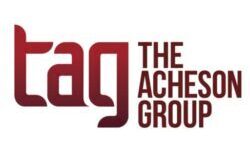In November’s FSMA Friday webinar, TAG Senior Director – Food Safety Liliana Casal-Wardle discussed the process and purpose of Aligning Food Safety Programs with Culture to Minimize Risk. FSMA provides direction on requirements for food safety programs including a focus on hazards that need to be highlighted, the management of risk, and the implementation of preventive controls, including how they are to be managed, verified, validated, documented, tracked, etc. But for all of these, the greatest component is the people who are to implement and manage them. To ensure continuity, those people need to understand the food safety programs, want to drive them, and perform consistently every day. How do you succeed in this? Through education and training, then incorporating food safety into your culture by building a behavior, creating empowerment, delivering understanding, and allowing communication. When management shows food safety culture leadership, participating in and asking questions of the workforce, the workforce will start to passionately interact with you and provide solutions on how to do things better. Being the ones on the floor every day, they can give you great feedback and discuss how to do things better, resulting in a continually improved food safety program and increased regulatory compliance. This doesn’t mean letting the workforce do what they want; it means working together to develop, implement, monitor, follow, and improve the food safety, so it becomes the strength of your facility. In the same way, it doesn’t mean implementing a program then walking away; the leaders have to believe in it and walk the walk. You have to be seen, walk the floor, and talk the talk. You have to notice and correct GMP non-compliance – if supervisors walking the floor don’t pay attention to these, the workers won’t either. So everyone has to have the mentality of “If I do it wrong, I will fail; if I fail, I will have recalls.” Food safety has to be incorporated into the efficiencies and be part of operations. If the people are not owning the culture, it will not succeed, and you will have more frequent and repetitive issues. How do you measure the performance of a food safety culture? Every facility has KPIs, including those that are reactive, such as customer complaints, and those that are in-process, such as environmental monitoring, certifications, etc. And every facility is federally inspected and (nearly every facility) is third-party audited. A recent GFSI position paper on food safety culture shows that it has increasingly become a component in modeling. FDA investigators will observe workers on the floor, watching what they are doing with their hands. They will ask about your food safety program and watch for its performance (or lack of). The biggest difference in measuring a food safety plan and a food safety culture is that: Success of a food safety plan is measured in moments. Success of a food safety culture is measured through trends and engagement. The GFSI paper provides guidance on integrating your programs with behaviors, and showing pillars and metrics on education and communication to gauge response and understanding, and determine the impact of your food safety culture and its success. How do you guarantee continuity, growth and strengthening of the Culture? People need to be engaged right from the beginning. Then to keep the continuity, look at it like a marketing model: maintain very strong communication and continue to empower your team through training, education, and recognition that is more positive than negative. A key goal is to build the trust of your people, so they feel they can tell you what they did wrong; then build learning moments from those situations. It’s very important to not let food safety culture become just another QA program. To enable it to survive, senior leaders and all departments need to stay involved and in support. A food safety culture needs to be led by company leaders, with company objectives focused on it: when you design a new product, incorporate food safety culture; when sourcing ingredients, incorporate food safety culture; when marketing the product, incorporate food safety culture. How do consumers benefit when a food company has a strong food safety culture? Consumers expect that what they buy will be good; it will be of quality and be safe. Food is a necessity and a pleasure; consumers have an expectation that they won’t get sick from eating your food. That is a huge risk area, and it is an area for which everyone holds responsibility. If you do it wrong, and a consumers get sick or your product is recalled, they will remember it much longer than it takes your company to fix it; just as recovery from a foodborne illness is painful to the person who eats contaminated food, so too is reputation recovery painful to the companies involved in the production of that food. Remember that consumers have very high expectations and very long memories. So building your food safety culture should not be considered a cost reduction model, or a resource reduction mode; it’s an excellence model that you build to enable your success.





